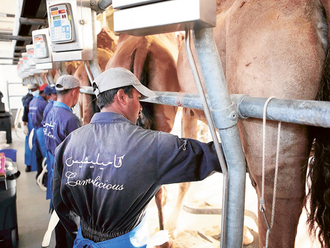
It's going to be a long weekend!
What is Al Hijri – The Islamic New Year?
The occasion marks 1,440 years since the migration of Prophet Mohammad (peace be upon him) and his companions from Makkah to Madinah, Islam’s holiest cities in Saudi Arabia.
The first year in the Islamic calendar, Hijri 1, corresponds to the year 622AD.
Hijri is derived from Arabic word Hijrah, which means migration. In the religious context, it specifically refers to the migration of Prophet Mohammad (PBUH) more than 14 centuries ago.
Read: What are the other UAE 2018 public holidays?
When will it take place?
Hijri New Year actually falls on September 11, however the UAE government has pushed the day off, so that workers can receive a long weekend.
The Private sector holiday for the Hijri New Year in UAE will be on Thursday September, 13, as per an announcement by the Ministry of Human Resources.
The Public sector holiday for federal and government institutes will also fall on September 13, Thursday, and work would resume on Sunday, September 16.
Find out when the next long weekend will take place
Why does the Islamic calendar start with Hijrah and what is the significance of this event?
Hijrah was the definitive turning point in the history of Islam. It is not just a historical event, but is an opportunity for introspection.
Thousands of years ago Prophet Mohammad (peace be upon him) and his companions migrated, leaving everything behind — their homes, their property, and their loved ones. Because they chose to sacrifice worldly gains and comforts for the perseverance of their religion, which was at the time in danger in Makkah. The prophet himself was escaping his death from the Quraish elderlies.
What is the Hijri calendar?
The Hijri calendar is based on the lunar year, in which months are 29 or 30 days, depending on when the waxing crescent moon is sighted after the new moon. As a result, the Hijri year is shorter than the Gregorian solar year, arriving around 11 days “earlier” after each full cycle.
What are the months on the hijri calendar?
1. Muharram
2. Safar
3. Rabi Al Awwal
4. Rabi Al Thani
5. Jumada Al Ula
6. Jumada Al Akhira
7. Rajab
8. Sha’aban
9. Ramadan
10. Shawwal
11. Dhu Al Qa’da
12. Dhu Al Hijja











